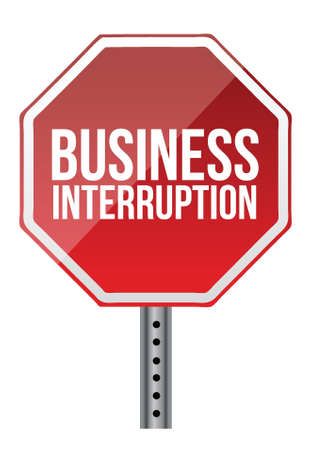1. Understanding the Current U.S. Networking Landscape
Exploring the New Face of Professional Networking
Reentering the U.S. job market can feel overwhelming, especially since networking has changed dramatically in recent years. The COVID-19 pandemic accelerated digital transformation, shifting much of professional networking online. Today, understanding where and how to connect is key for success.
The Latest Networking Trends
| Trend | Description |
|---|---|
| Virtual Networking Events | Many conferences and meetups now offer virtual or hybrid options, making it easier to join from anywhere. |
| Increased Use of LinkedIn | LinkedIn remains the top platform for professional connections, job searching, and sharing industry insights. |
| Niche Online Communities | Platforms like Slack, Discord, and specialized forums are growing for industry-specific discussions and introductions. |
| Informational Interviews | Reaching out to professionals for advice or insights about a role or company is more common and well-received post-pandemic. |
| Personal Branding | Your online presence—especially on LinkedIn—matters more than ever; people often “meet” you digitally before ever speaking in person. |
Popular Networking Platforms in the U.S.
| Platform | Main Uses |
|---|---|
| Professional networking, job searching, sharing content, joining groups | |
| Meetup.com | Finding local and virtual events based on interests or industries |
| Eventbrite | Registering for webinars, workshops, and career fairs |
| Slack/Discord Groups | Joining topic-focused communities for real-time discussions and advice |
| Clubhouse/Twitter Spaces | Diving into live audio conversations with professionals across industries |
The Unwritten Rules of U.S. Networking Post-Pandemic
- Be Respectful of Time: Virtual meetings make it easier to schedule quick chats; always confirm time zones and keep meetings brief unless invited to go longer.
- Add Value First: When reaching out, share helpful information or ask thoughtful questions before making requests.
- Follow Up: After meeting someone new (online or offline), send a thank-you note or message to maintain the connection.
- Diversify Your Network: Don’t just focus on people in your direct field; broader networks often lead to unexpected opportunities.
- Stay Active Online: Regularly engage with posts, comment thoughtfully, and share relevant articles to keep your profile visible.
Navigating Post-Pandemic Dynamics
The rise of remote work means geography matters less—you can build relationships across the country. At the same time, people value genuine interactions over quantity. Focus on building authentic connections rather than collecting contacts. Understanding these changes will help you navigate the current U.S. networking scene confidently as you rejoin the workforce.
2. Rebuilding Your Professional Brand Online
Why Your Online Presence Matters in the U.S. Job Market
In today’s digital world, your online presence is often the first impression American employers and peers will have of you. Whether you’re returning to work after a break or transitioning careers, updating your professional brand online is key to successful networking and job searching in the U.S.
Revamping Your LinkedIn Profile
LinkedIn is the go-to platform for American professionals. A strong, up-to-date profile can help you stand out to recruiters and hiring managers. Follow these simple steps to refresh your LinkedIn:
| Step | What To Do |
|---|---|
| Add a Professional Photo | Use a clear, friendly headshot that fits your industry standards. |
| Update Your Headline | Describe who you are and what you do in one sentence (e.g., “Marketing Specialist | Helping Brands Grow Online”). |
| Rewrite Your Summary | Share your story, highlight achievements, and mention skills relevant to your target roles. |
| Highlight Recent Experience | Add new jobs, projects, or volunteer work from your career break. |
| Showcase Skills & Endorsements | Add skills that match U.S. job postings; ask former colleagues for endorsements. |
| Connect with Industry Peers | Follow companies, join groups, and connect with people in your field. |
Curating Your Digital Presence Beyond LinkedIn
Your digital footprint includes more than just LinkedIn. Make sure any public social media accounts reflect your professional image. Google yourself to see what employers might find. Clean up old posts if needed and consider starting a personal website or online portfolio to further showcase your expertise.
Tips for Showcasing Your Skills Online
- Share articles or insights related to your industry on LinkedIn.
- Post examples of your work (presentations, designs, reports) when possible.
- If you’re changing careers, highlight transferable skills in both your profile and posts.
- Request recommendations from previous colleagues or supervisors—these testimonials carry weight with American employers.
- Engage in discussions on industry forums or groups to build visibility and credibility.
The Power of Consistency
A consistent and polished online presence helps employers trust that you’re serious about returning to the workforce. Regularly update your profiles, share your progress, and actively participate in professional communities to strengthen your network as you reenter the U.S. job market.
![]()
3. Making Genuine Connections in a Diverse Workplace
Building authentic relationships is key to successful networking, especially when rejoining the U.S. job market. American workplaces are known for their diversity, and connecting with professionals from different backgrounds can open doors to new opportunities and perspectives. Here are some practical tips to help you initiate conversations, find common ground, and engage authentically with colleagues and peers.
How to Initiate Conversations
Starting a conversation might feel intimidating, but a friendly approach goes a long way. Use openers that show interest in the other person’s experiences or role. Here are some easy ways to break the ice:
| Situation | Conversation Starter |
|---|---|
| First day at work | “Hi, Im new here! What do you enjoy most about working here?” |
| During a meeting break | “What did you think about the last topic we discussed?” |
| Company event or lunch | “How long have you been with the company? Any tips for someone just starting out?” |
| Virtual setting | “I noticed your background is in marketing—how did you get started in that field?” |
Finding Common Ground
To build rapport, look for shared interests or experiences. These could be related to work, hobbies, cultural backgrounds, or even favorite sports teams. If you’re unsure where to start, listen actively and ask follow-up questions. This not only helps you discover similarities but also shows genuine curiosity.
- Ask about professional journeys: “What inspired you to choose this career path?”
- Share your own story: Briefly introduce your background and invite others to share theirs.
- Mention local events or news: “Did you catch the game last night?” or “Have you tried any good restaurants around here?”
- Find mutual connections: Reference shared colleagues or group projects as talking points.
Practicing Authentic Engagement
Diversity means everyone brings something unique to the table. To connect authentically:
- Be yourself: Let your personality shine while remaining respectful of others’ views.
- Acknowledge differences: Show openness by asking about unfamiliar customs or perspectives in a respectful way.
- Follow up: After your first chat, send a quick message or email saying it was nice to meet them.
- Participate in group activities: Join employee resource groups, volunteer committees, or team lunches whenever possible.
- Show appreciation: Thank colleagues for their time and insights—it leaves a positive impression.
Quick Tips for Authentic Networking
| Tip | Description |
|---|---|
| Listen more than you talk | This shows respect and makes others feel valued. |
| Avoid making assumptions | Treat each interaction as an opportunity to learn something new. |
| Be patient with yourself and others | Cultural understanding takes time; don’t rush connections. |
| Stay positive and approachable | A friendly attitude encourages others to engage with you. |
By focusing on genuine connection, professionals reentering the U.S. job market can build strong networks that support both personal growth and career success.
4. Leveraging In-Person and Virtual Networking Opportunities
Rejoining the U.S. job market means embracing both face-to-face and online networking to build valuable connections. American professionals often rely on a mix of in-person events and digital platforms to expand their contacts, learn about industry trends, and discover job leads. Here’s how you can make the most of these opportunities:
Understanding Different Networking Events
| Type of Event | What to Expect | How to Prepare |
|---|---|---|
| Industry Meetups | Casual gatherings focused on a specific field or interest | Research topics, bring business cards, have your elevator pitch ready |
| Professional Conferences | Larger events with seminars, panels, and networking sessions | Review agenda, set goals for who to meet, prepare questions for speakers |
| Career Fairs | Events where companies recruit new talent | Update your resume, dress professionally, be ready to introduce yourself quickly |
| Virtual Networking Events | Online webinars, chats, or virtual conferences via Zoom or LinkedIn | Test your tech beforehand, prepare a digital introduction, engage in chat discussions |
Navigating American Networking Culture
- Be Proactive: In the U.S., it’s common to introduce yourself and reach out first. Don’t wait for others to approach you.
- Small Talk Matters: Conversations often start with casual topics like sports or local news before moving to business.
- Follow Up: After meeting someone, send a quick thank-you email or LinkedIn message. This is standard practice and helps keep the connection alive.
- Diversity Counts: Try connecting with people from different backgrounds and industries. Diverse networks open more doors.
Tapping into Virtual Networking Platforms
The U.S. professional landscape embraces technology. Key platforms include:
- LinkedIn: Join groups related to your industry, comment on posts, and attend virtual meetups organized through the platform.
- Meetup.com: Find local or virtual groups based on your interests or profession.
- Eventbrite: Search for upcoming webinars or professional events in your area or field.
Quick Tips for Effective Networking Online and Offline:
- Create a short personal introduction (your “elevator pitch”). Keep it friendly and relevant.
- If you’re shy, prepare some conversation starters about recent industry trends or news.
- Dress appropriately—business casual is usually safe for most events unless otherwise specified.
- Don’t forget to listen actively; show genuine interest in others’ stories and experiences.
- Keep track of new contacts with notes about where you met and what you discussed.
5. Following Up and Maintaining Valuable Relationships
Mastering the Art of Effective Follow-Ups
Following up after meeting someone at a networking event or an informational interview is a key part of building professional relationships in the U.S. job market. A timely, polite follow-up message shows that you value the connection and are serious about your professional goals.
Best Practices for Follow-Up Emails
| Tip | Description |
|---|---|
| Send Within 24-48 Hours | Reach out soon after meeting to keep your conversation fresh in their mind. |
| Be Specific and Personal | Mention something you discussed to personalize your message. |
| Express Gratitude | Sincerely thank them for their time, advice, or assistance. |
| Keep It Brief | Respect their time by being concise and clear about your intentions. |
| Add Value if Possible | If you can, share an article or resource related to your conversation to show engagement. |
Crafting Thoughtful LinkedIn Messages
LinkedIn is a powerful tool for staying in touch with new contacts. When sending a connection request or follow-up message on LinkedIn, always personalize it—mention where you met or what you talked about. Avoid generic messages like “Let’s connect.” Instead, try: “It was great meeting you at the marketing meetup yesterday! I enjoyed our chat about digital strategies.”
Building Long-Term Professional Relationships
Nurturing valuable connections goes beyond one email or message. In U.S. business culture, relationships are maintained over time through periodic check-ins and mutual support. Here are some ways to stay connected:
- Share Updates: Let contacts know about major career developments or achievements.
- Congratulate Milestones: Send quick notes when they get promoted or achieve something notable.
- Offer Help: If you see a way to assist them—such as sharing a relevant job posting or introducing them to someone—reach out.
- Coffee Chats: Occasionally suggest grabbing coffee (in person or virtual) to catch up and exchange insights.
Sample Follow-Up Email Template
Hello [Name],I enjoyed speaking with you at [event/meeting name]. Thank you for sharing your insights on [topic]. I appreciated learning more about your work at [company].If possible, I’d love to stay in touch and perhaps reconnect in the future.Best regards,[Your Name]By consistently following up and nurturing connections, you’ll build a strong professional network that supports your journey as you re-enter the U.S. job market.


